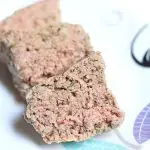Green Cilantro Pork Curry
This Green Cilantro Pork Curry combines tender pork pieces with a vibrant, aromatic cilantro marinade, creating a dish that is both fresh and flavorful. Infused with a blend of spices and simmered in creamy coconut milk, it offers a perfect balance of heat and richness. This curry is a delightful fusion of bright herbaceous notes and comforting warmth, making it a standout meal for any occasion.

Cilantro, also known as coriander in some parts of the world, is an herb known for its vibrant green leaves and distinct, citrusy flavor. This versatile herb is widely used in various cuisines, from Mexican salsas and Indian chutneys to Middle Eastern salads and Southeast Asian curries. Both the leaves and stems of cilantro are packed with essential oils that add a fresh, zesty note to dishes. Its unique taste can be polarizing, but for those who enjoy it, cilantro brings a refreshing, bright dimension to countless recipes.
Pork is a popular and versatile meat enjoyed in cuisines around the globe. Its adaptability makes it a staple in many traditional and modern recipes, catering to a wide range of tastes and culinary preferences.
Cooking curry with pork is a delightful fusion of flavors and textures, combining the richness of the meat with the aromatic spices of the curry. Pork’s ability to absorb and enhance spices makes it an excellent choice for curry dishes, which are often characterized by complex, layered flavors.
The practice of making pork curry is prevalent in various cultures, particularly in regions such as Southeast Asia, India, and the Caribbean. Each area brings its unique twist to the dish, using local spices and ingredients to create distinct flavors. For instance, in Indian cuisine, pork curry might be infused with spices like cumin, coriander, and turmeric, while in Thai cuisine, it could feature lemongrass, galangal, and coconut milk. This culinary tradition showcases the versatility of pork and the rich heritage of curry-making across different cultures, offering a comforting and flavorful meal enjoyed by many.

Ingredients and substitutes
- Pork (Shoulder or Tenderloin) – Provides the main protein and base flavor for the curry. Pork shoulder is more flavorful due to its higher fat content, while tenderloin is leaner and more tender. Chicken thighs, lamb, or beef can be used if pork is not preferred. Tofu or chickpeas can be used for a vegetarian option.
- Fresh Cilantro Leaves and Stems Essential for the vibrant green color and fresh, herbal flavor of the curry. Both leaves and stems are used for their intense flavor. Parsley can be used, but it will alter the flavor profile. A combination of parsley and mint can be a closer match.
- Garlic and Ginger – These aromatics add depth and warmth to the curry. They are foundational in many curry recipes for their pungent and spicy notes. Garlic powder and ginger powder can be used in a pinch, but fresh is preferred for the best flavor.
- Green Chilies – Provide heat and a slightly fruity flavor to the curry. The amount can be adjusted based on spice preference. Jalapeños, serrano peppers, or even a dash of cayenne pepper can be used as substitutes.
- Ground Cumin and Ground Coriander – These spices add earthy and citrusy notes, respectively, enhancing the overall complexity of the curry. For cumin, you can use caraway seeds. For coriander, ground fennel or a small amount of lemon zest can be used.
- Lemon Juice – Adds acidity and brightness, balancing the flavors of the curry. Lime juice or white vinegar can be used as alternatives.
- Vegetable Oil – Used for marinating the pork and cooking the curry base, it helps in blending the spices and ensuring even cooking. Canola oil, sunflower oil, or any neutral oil can be used.
- Onion – Provides a sweet and savory base for the curry, adding body and flavor. Shallots or leeks can be used, though they will impart a slightly different flavor.
- Tomato – Adds acidity and sweetness, helping to balance the flavors and create a rich sauce. Tomato paste diluted with water, canned tomatoes, or even a bit of tamarind paste can be used.
- Turmeric Powder Adds a warm, earthy flavor and a vibrant yellow color. A small amount of saffron or annatto can be used, though they have different flavor profiles.
- Garam Masala – A blend of spices that adds warmth, complexity, and a hint of sweetness to the curry. Curry powder or a combination of cinnamon, cloves, and cardamom can be used.
- Coconut Milk – Adds creaminess and a subtle sweetness, balancing the spices and giving the curry a rich texture. Heavy cream, yogurt, or a blend of milk and cream can be used.
- Chicken or Vegetable Broth – Provides additional flavor and helps to thin the curry sauce to the desired consistency. Water with a bouillon cube or stock concentrate can be used.
- Fresh Cilantro Leaves (for garnish) – Enhances the presentation and adds a fresh, herbal note to the finished dish. Fresh parsley or mint can be used for garnish, though the flavor will dif
Frequently asked questions
Yes, you can substitute pork with chicken, lamb, or beef. For a vegetarian option, tofu or chickpeas work well.
The spice level can be adjusted to your preference. The recipe calls for green chilies, which you can increase or decrease based on your heat tolerance.
Absolutely! This curry actually tastes better the next day as the flavors have more time to meld together. Store it in the refrigerator and reheat gently before serving.
This curry pairs well with steamed rice, naan, or roti. A fresh salad or raita can also complement the dish nicely.
For the best flavor, marinate the pork for at least one hour. However, for optimal results, marinate it overnight.
Fresh cilantro is recommended for the best flavor and vibrant color. Dried cilantro won’t provide the same fresh, herbal notes.
If you don’t have coconut milk, you can use heavy cream or yogurt as a substitute. However, this will alter the flavor profile slightly.
Store any leftover curry in an airtight container in the refrigerator for up to 3 days. Reheat gently on the stove or in the microwave before serving.
Yes, you can freeze Green Cilantro Pork Curry. Let it cool completely, then transfer it to a freezer-safe container. It can be frozen for up to 3 months. Thaw overnight in the refrigerator before reheating.
You can finely chop the cilantro, garlic, ginger, and chilies and mix them with the other marinade ingredients. The texture will be different, but the flavor will still be delicious.
Pin this and other East-Indian Recipes on Pinterest here. Don’t forget to like and Follow for more recipes.

Ingredients
Green marinade
- 1 kg Pork shoulder or tenderloin, cut into bite-sized pieces
- 2 cups Fresh cilantro leaves and stems chopped
- 6 large Garlic cloves minced
- 3-inch inch Fresh Ginger grated
- 2 large green chilies chopped (adjust to taste)
- 2 tsp Ground cumin
- 3 tsp Ground coriander
- 2 – 3 tbsp Lemon juice
- 2 tbsp Vegetable oil
- ½ tsp Salt to taste
- ½ tsp Black pepper powder
For the curry
- 2 tbsp Vegetable oil
- 1 large Onion finely chopped
- 1 large Tomato finely chopped
- 1 tsp Turmeric powder
- 1 tsp Garam masala
- 1½ cup Coconut milk
- 1½ cup Chicken or vegetable broth
- ½ tsp Salt to taste
- ½ tsp Black pepper powder
- Fresh cilantro leaves for garnish
Instructions
- Marinate the Pork: In a blender or food processor, combine the cilantro, garlic, ginger, green chilies, cumin, coriander, lemon juice, and vegetable oil. Blend until you get a smooth paste. Place the pork pieces in a bowl, pour the cilantro marinade over them, and mix well to coat the pork evenly. Cover and refrigerate for at least 1 hour, preferably overnight, to let the flavors meld.1 kg Pork shoulder or tenderloin,, 2 cups Fresh cilantro leaves and stems, 6 large Garlic cloves, 3-inch inch Fresh Ginger, 2 large green chilies, 2 tsp Ground cumin, 3 tsp Ground coriander, 2 – 3 tbsp Lemon juice, 2 tbsp Vegetable oil, ½ tsp Salt, ½ tsp Black pepper powder
- Prepare the Curry: Heat 2 tablespoons of vegetable oil in a large pan or pot over medium heat. Add the chopped onions and sauté until they turn golden brown, about 5-7 minutes. Add the chopped tomatoes and cook until they soften and the oil separates from the mixture, about 5 to 7 minutes. Stir in the turmeric powder and garam masala. Cook for another 2 minutes.2 tbsp Vegetable oil, 1 large Onion, 1 large Tomato, 1 tsp Turmeric powder, 1 tsp Garam masala, 1½ cup Coconut milk, 1½ cup Chicken or vegetable broth, ½ tsp Salt, ½ tsp Black pepper powder
- Cook the Pork: Add the marinated pork to the pan. Cook on medium-high heat until the pork is browned on all sides, about 5-7 minutes. Pour in the coconut milk and chicken or vegetable broth. Stir to combine. Bring the curry to a boil, then reduce the heat to low. Cover and simmer for 50-60 minutes, or until the pork is tender and the flavors have melded together.
- Finish and Serve: Taste and adjust the seasoning with salt and pepper as needed. Garnish with fresh cilantro leaves. Serve hot with steamed rice or naan bread.Fresh cilantro leaves
Recipe Notes
- Choose the Right Cut of Pork: Use pork shoulder for a more decadent, more flavorful curry or pork tenderloin for a leaner, more tender option. Ensure the pork is cut into uniform bite-sized pieces for even cooking.
- Marinate for Maximum Flavor: Marinate the pork in the cilantro mixture for at least an hour, but preferably overnight. This helps the meat absorb the flavors and become more tender.
- Blend Cilantro Thoroughly: Blend the cilantro, garlic, ginger, and chilies into a smooth paste. This will help evenly distribute the flavors throughout the curry.
- Brown the Pork: Searing the marinated pork pieces before simmering them in the curry sauce adds depth and richness to the dish.
- Adjust Spice Levels: Tailor the number of green chilies to your heat preference. Start with less; you can always add more if you want an extra kick.
- Use Fresh Ingredients: Fresh cilantro, garlic, ginger, and chilies provide the best flavor. Avoid using dried or old herbs and spices.
- Simmer Slowly: Allow the curry to simmer gently to let the flavors meld together, and the pork becomes tender. Rushing this process can result in stricter meat and less developed flavors.
- Balance the Seasoning: Taste the curry towards the end of cooking and adjust the salt, pepper, and acidity (lemon juice) to your liking. This ensures a well-balanced dish.
- Serve with Complementary Sides: Pair the curry with steamed rice or warm naan to soak up the delicious sauce. A side of fresh salad or raita can add a cooling contrast.
- Garnish for Freshness: Just before serving, sprinkle fresh cilantro leaves on top. This adds a burst of color and a final fresh, herbal flavor layer.
About Videos – most recipes has two videos – a quick version in the post & longer detailed version on this recipe card. Please do subscribe to my channel if you like my videos
The nutrition information and metric conversion are calculated automatically. I cannot guarantee its accuracy. If this data is important to you please verify with your trusted nutrition calculator. Thank you




















